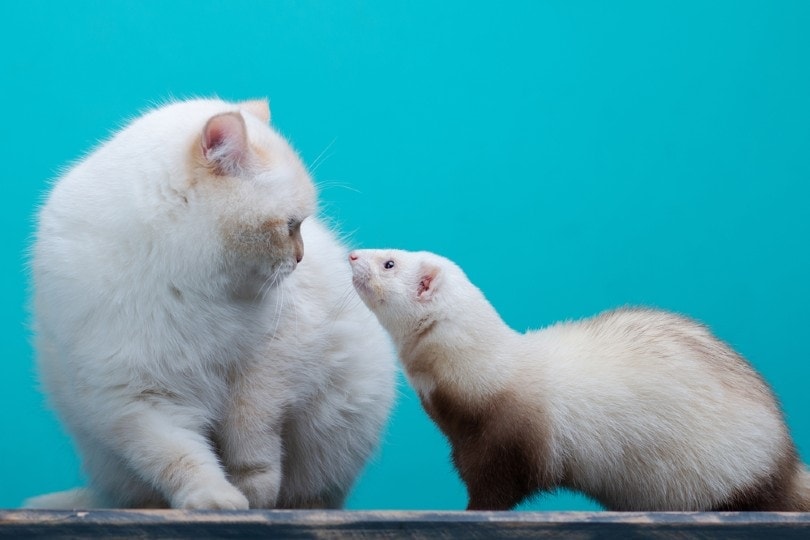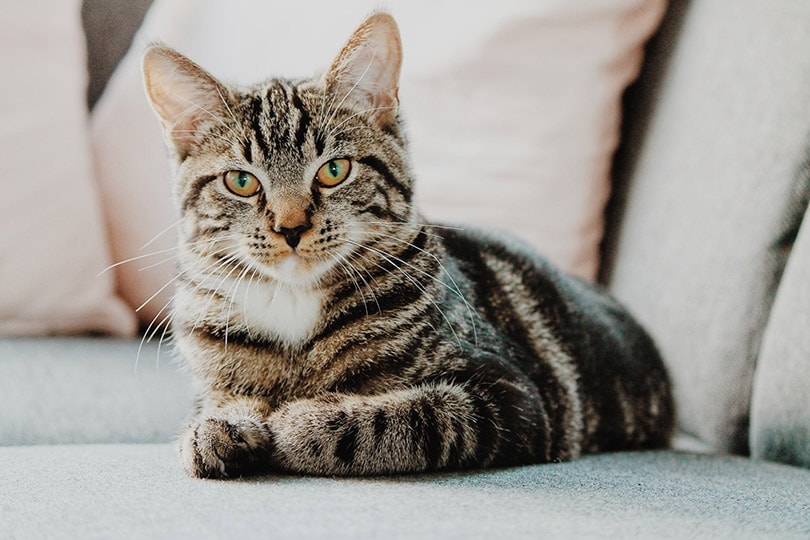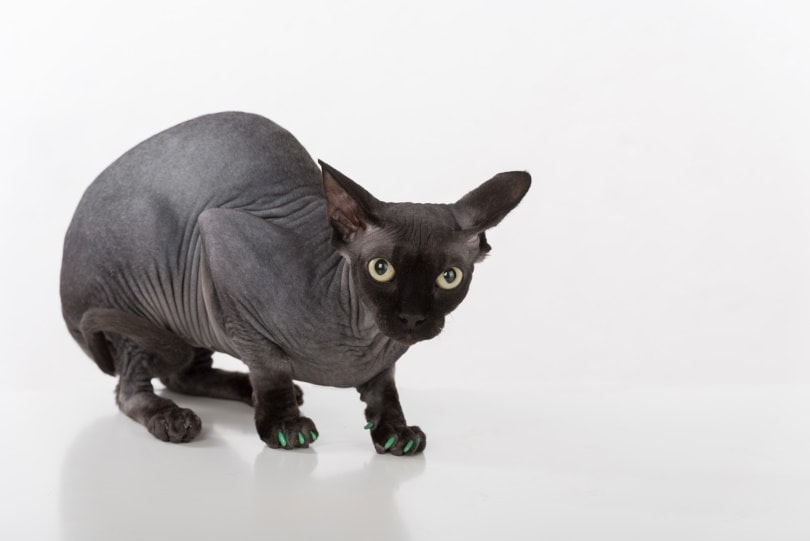Mixing two different species in one household is always a somewhat tricky situation, especially when they are two animals that haven’t had much history with one another. You want the best for your pets, and bringing a ferret into a cat’s home, or vice versa, could have some serious consequences if you aren’t prepared.
Do ferrets and cats get along? It is possible to have ferrets and cats coexist safely in the same household. However, just because it is doable doesn’t mean that it will work out smoothly for you. Before you introduce a new animal into your home, you have to consider the temperament of the one who is already living there. If your cat is more aggressive with strong predatory instincts, it’s best to keep small animals away from them. If they’re more timid, the ferret might be the one doing damage to the cat. If you think your pets are calm enough to handle bringing a new animal into the house, there isn’t much reason why they shouldn’t learn to accept one another and get along.
How to Introduce Cats and Ferrets to One Another
The most important thing to remember when bringing any new animal into your home is that you should never leave the two together unsupervised. If they haven’t been properly introduced, it could mean a dangerous situation for one or both of the animals. Here are the steps to take to introduce a cat and a ferret to one another.
1. Introduce them safely.
You have to acknowledge that introducing a cat and ferret to one another is going to be stressful for both of them. Always stay close to both animals so that you can intervene if necessary. Your goal is to get the animals used to the other’s scent. Do this by keeping the ferret in its cage and allowing your cat to sniff around. If your pet cat shows any signs of aggression, end the interaction right away to show them that hostile behavior is not tolerated. Continue to introduce them this way until both animals are comfortable with one another. This is the most important step of the process and can make or break the relationship between the two.
2. Allow them to interact.
Once they are comfortable with their scents, you can start to introduce them without the barrier of the cage. Keep a firm yet gentle grip on the ferret or cat and allow the other to sniff them and get comfortable with them. Try to do this with another person so that they can take control of the other pet if something goes awry. Repeat this introduction process as many times as it takes until the two seem friendly or unaffected by the other.
3. Give them some space.
Instead of holding one, put one of the animals on a leash so that they don’t dart away if they get scared. With the one on the leash, allow the two to sit in the same room and interact with one another again. Let them play with each other, but always stay nearby so that their sessions don’t ever get too aggressive. It’s easy for playful nips and kicks to turn into something more serious.

4. Never leave them unsupervised.
This step should only be done under strict supervision. Ferrets have claws and sharp teeth and can usually hold their own against a cat, but you don’t want either one to be hurt in the process. Keep each session short at first and gradually increase the amount of time they’re allowed to spend with the other. For their safety, never leave them alone, even when you are confident that they won’t hurt each other.
Tips for Helping Cats and Ferrets Get Along
If your cat and ferret don’t seem to get along, even when you introduce them properly, there are a few simple steps you can take to help them be more comfortable with the other.
First, give each animal a private space to call their own. Cats like having a location up high where they are out of reach of the ferret, and ferrets like slim tubes that they can hide inside. Don’t force them to share toys, either. Instead, each pet should have things that they can mark as their own.
Second, feed them individually. This reduces food-related aggression towards the other. Animalistic instinct leads them to protect their food and can turn a good relationship into a bad one in a matter of seconds. Do not give one treats when the other is present either.
Lastly, if possible, introduce them to one another when they are both young. They adapt easier when they learn from a young age that the other isn’t a threat.
How to Handle Cats and Ferrets Who Don’t Get Along
If you’ve tried everything you can and the two still don’t like being around each other, be prepared to keep them permanently separated. They will require separate spaces that are inaccessible to the other pets, especially since ferrets are intelligent and sometimes learn how to open their cages on their own. If you do keep them separate, make enough time for both of them. You committed to them, and the last thing you want is for one to feel neglected.
Final Thoughts
A cat and ferret friendship seems like a strange one, but it is definitely possible for them to coexist and even become friends. It is going to take a lot of patience on your part, but being able to trust them together is worth the time. Stay vigilant about your introductions and remember not to favor one over the other to avoid feelings of jealousy. Hopefully, over time, you’ll have two animals who love spending time together.
Featured Image Credit: Miroshnikova Arina, Shutterstock






